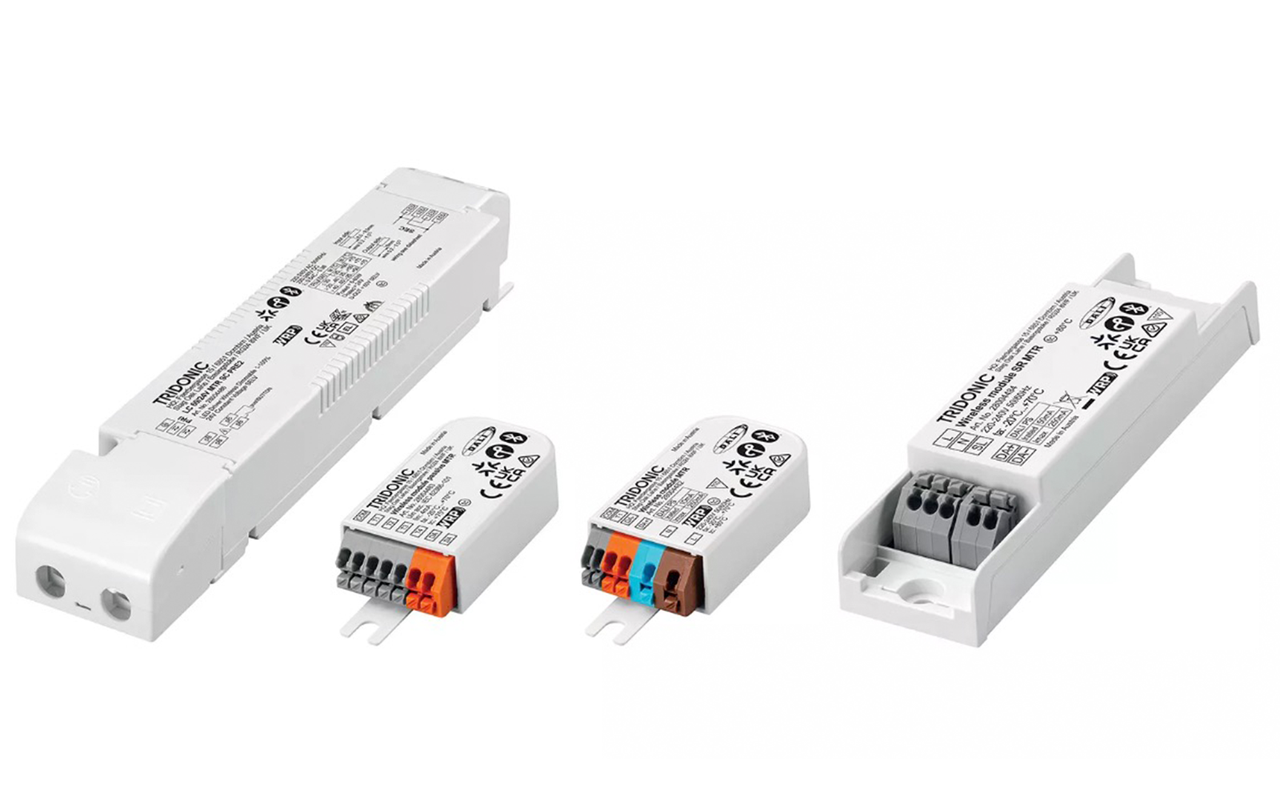Tridonic Launches First Matter-compatible Products for Lighting Controls
What if you could control all your Smart Home or Smart Office devices such as floor lamps, Smart TVs and electronic door locks from a single app, either Apple or Google? A new connectivity protocol has brought us an important step closer to this vision. It’s called Matter. Tridonic can now offer its customers the first Matter-compatible products.
Matter, the new open-source communication standard, bridges the gap between a smart ecosystem, such as Apple Home, and intelligent devices from various providers. Matter is the result of a joint initiative involving tech players such as Amazon, Apple, Google, and the Connectivity Standards Alliance (CSA). Today, around 270 companies from a wide range of industries are part of the Matter Alliance, all working to improve interoperability in the smart world.
Tridonic is committed to interoperability in the lighting industry
Interoperability runs like a thread through Tridonic’s research and development activities. As a provider of hardware and software for intelligent lighting, its commitment to the interoperability of lighting technology systems goes back many years. Among other things, Tridonic has played a major role in the development of the DALI-2 standard and has been offering the first LED drivers certified according to Zhaga Book 24 since 2022.
Matter now complements the proven DALI standard for wired lighting systems. With the support of the Matter protocol, Tridonic gives luminaire manufacturers a competitive advantage in smart lighting, enabling them to quickly develop Matter compatible luminaires that can be easily integrated in a wide variety of smart ecosystems – for example in offices, retail stores, hotels, holiday apartments and the high-end residential sector. Thanks to Matter-compatible elements, the entire atmosphere of a room can be set up with just a few clicks on a single device – everything from lighting to air conditioning including smart locks for opening and closing doors.
First wireless Matter drivers and Matter modules for DALI lighting systems
Tridonic is one of the first manufacturers to offer Matter-compatible products. The following are available:
- Wireless Matter driver: Dimmable 24V constant-voltage driver available in 35W, 60W, 100W and 150W versions
- Active wireless Matter to DALI module: Active module with integrated 10 mA DALI bus supply and one momentary-action switch input
- Passive wireless Matter to DALI module: Passive module that requires a DALI power supply (power consumption: 4 mA), four momentary-action switch input
- Wireless Matter to DALI SR: With strain relief for robust installation and 50 mA integrated DALI power supply
The new Matter-compatible DALI modules can be connected directly to DALI LED drivers already installed in existing luminaires and can then control them. There is no need for any retrofitting work.
Here is a possible Matter use scenario: A smartphone with the respective app of the preferred ecosystem, such as the Apple Home app preinstalled on every iPhone, acts as a remote control and commissioning tool for the smart network. To add a Matter-ready device you point the smartphone’s camera at the QR code on the device. Quick and simple. A smart home device such as the Apple Home Pod mini or a Samsung Wireless Charger serves as the hub for Matter communication. It forwards the commands from the terminal device via a wireless mesh network to a lighting strip system which can “understand” the commands and translate them into the desired lighting mood thanks to the Matter intelligence integrated in the LED driver. Matter can communicate via both WiFi and Thread. Tridonic uses the IP-based Thread wireless protocol as the basis for the wireless mesh network. Compared to classic WiFi, Thread has a lower power consumption even with a large number of network nodes, and offers stable, low-latency data transmission with AES encryption. A simple command such as “Hey Siri, dim the lights in the office to 20 percent” is then all that is needed to control the LED lighting.
© 2023 Luger Research e.U. – Institute for Innovation & Technology

